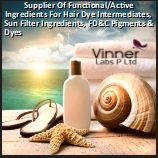Sun protection clothing, known as UPF or UV clothing, is lightweight and designed to protect you from harmful UV rays and sunburn.
Sun protection clothing or UPF clothing is used to protect our bodies from harmful UV radiation. It consists of fabric that allows significant transmission of UVA but blocks most of the harmful UVB rays. The most common fabrics used in sun protection garments are nylon and polyester fabrics. UPF 3, 5, and 6 are the most frequently used films to increase protection against UVA and UVB radiations. They provide a higher level of protection than these films: UPF 2, 4, 8, and 12 offer lesser levels of protection against these radiations.
Sun protection clothing is a must-have for beachgoers, sunbathers, and outdoor enthusiasts. It provides you with the best protection from the harmful rays of the Sun. UVA/UVB absorption rates are measured on a UV index scale. The higher the number of UVA/UVB absorption, the more protection is provided from the harmful rays of sunlight.
Sun protection clothing, also known as UVA/UVB clothing, is an important part of protecting your skin from the harmful effects of the sun’s rays. Some experts say that sunscreen can double or triple cancer risk, while others say that sunscreen only slightly increases the risk of skin cancer. The ability to provide more effective sun protection, while maintaining freedom of movement, was one of the most important factors in its selection.
UV protection clothing is important because it offers an extra layer of protection against the sun’s damaging rays. The sun’s rays transmit ultraviolet radiation to the surface of our skin and we are at risk for skin cancer in the future if we stay out in the sun without sunscreen or a hat and long-sleeved shirt. Protection against UV damage can reduce your risk of melanoma, squamous cell carcinoma, and basal cell carcinoma.
There are several clothing options designed to protect you from the sun’s UV rays, like clothing made with fabric rated for level of UV protection and textiles treated with UV-inhibiting ingredients.
Weave, color, weight, and stretch all affect how much UV light your fabric blocks. A tighter weave means the fabric will block more light than a loosely woven fabric. Generally, the heavier or stretcher the fabric is, the better it blocks UV light. But getting a fabric wet reduces protection too by as much as half. Polyester is great because of the benzene ring that absorbs UV rays.
Clothing designed for sun protection is usually meant to be worn during warm and humid weather, and some may have ventilated weaves, moisture-wicking properties, and antibacterial properties to assist in cooling and breathability.
There is some evidence that using a detergent containing fabric brighteners, which are designed to make fabrics artificially look cleaner because they absorb UV radiation that would normally break down the fabric’s color, may increase the sun-protective capabilities of the clothing. Studies by the University of Alberta also show that darker colors do a better job of blocking UV rays than lighter colors.
Conclusion:
One of the best ways to protect yourself against the damaging effects of the sun is by wearing clothing. Cover as much body surface area as you can and wear UPF clothing! If you’re wearing regular clothing, be sure to use sunscreen in addition. Different countries regulate UPF clothing differently and not all UPF labels can be trusted. Strive for “sun smart” behavior, no matter what your protection strategy is.


